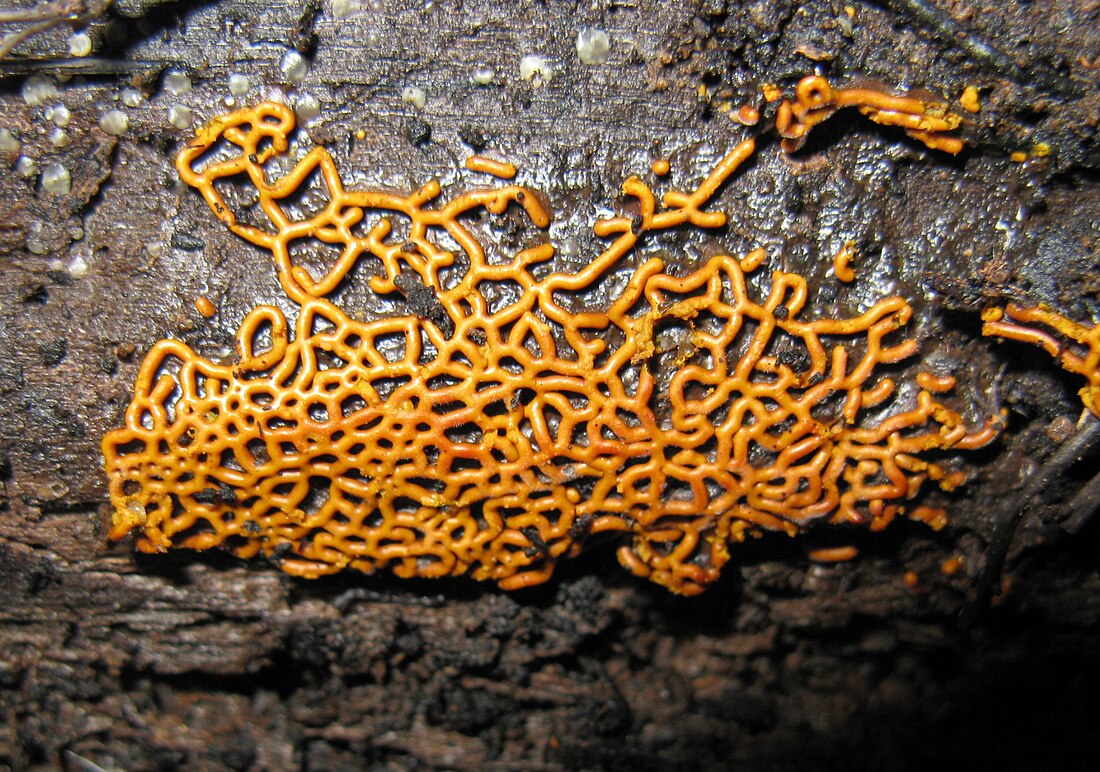Top Qs
Timeline
Chat
Perspective
Plasmodium (life cycle)
Living structure of cytoplasm that contains many nuclei From Wikipedia, the free encyclopedia
Remove ads
A plasmodium is a living structure of cytoplasm that contains many nuclei, rather than being divided into individual cells each with a single nucleus.

Plasmodia are best known from slime molds, but are also found in parasitic Myxosporea, and some algae such as the Chlorarachniophyta.
Remove ads
Structure
A plasmodium is an amoeboid, multinucleate, and naked mass of cytoplasm that contains many diploid nuclei. The resulting structure, a coenocyte, is created by many nuclear divisions without the process of cytokinesis, which in other organisms pulls newly-divided cells apart.[1] In some cases, the resulting structure is a syncytium, created by the fusion of cells after division. Under suitable conditions, a plasmodium may differentiate and form fruiting bodies bearing spores at their tips.
Remove ads
Taxonomic distribution
The term plasmodium, introduced by Leon Cienkowski,[2] usually refers to the feeding stage of slime molds; these are macroscopic mycetozoans.[3]
The multinucleate developmental stages of some intracellular parasites, namely Microsporidia (now in Fungi) and Myxosporidia (now in Cnidaria), former cnidosporans, are also sometimes called plasmodia.[4]
Similarly, in Rhizaria, the amoeboid, multinucleate protoplasts of some Cercozoan algae, e.g. Chlorarachniophyta, are called plasmodia. These lack cell walls; the syncytia are created by cell fusion. Some plasmodiophorids and haplosporidians are other multinucleated rhizarians.[5]
Remove ads
References
Wikiwand - on
Seamless Wikipedia browsing. On steroids.
Remove ads
